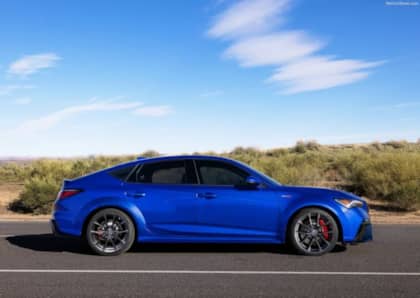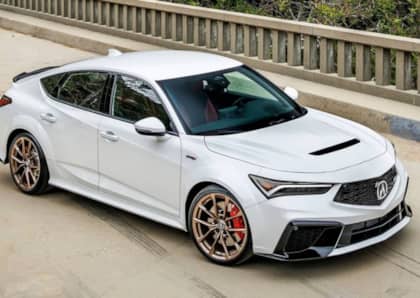What If? The New Toyota Supra, Acura Integra and Nissan Z Could Have Been Very Different
Looking out into the automotive landscape these days, it’ll surprise no one that nostalgia reigns supreme. As more and more automakers forecast an end date to their development of internal combustion power plants, enthusiasts are increasingly looking backward to not only relive old motoring memories, but secure their own piece of classic, near classic, or potentially classic automotive history. Even automakers, aware of the countdown, are reviving old models for one last ride before the scheduled end of traditional gas powered vehicles.

Toyota Supra
Prior to its release, the return of the Supra had been one of those longtime rumors that’s constantly shared on social media with no regard to accuracy or even common sense. Nevertheless, the Supra finally arrived in 2019 as a collaborative project with BMW. The Mark V took a decidedly sportier attitude, trading in its historic GT roots for a reworked version of BMW’s Z4 sports car. Although the new Supra retains the original’s straight six engine layout, the new version is much more of an agile and lightweight driver than before.

But what if Toyota had decided to keep the Supra in house? They already have a smaller RWD coupe platform underpinning Lexus’ RC coupe. While the Lexus is offered with three engine packages, none of them are a turbo six. Toyota now has access to such a motor, the 415hp turbo 3.5L V35A-FTS from the Lexus LS, or, and perhaps more appropriately, the newly announced Toyota Tundra.

With a de-contended interior, more aggressive suspension tuning, and a turbo-V6, would such a Supra have made Toyota fans happy? Or does the Supra name necessitate the use of a straight six above all other details, even if production (and engineering) is done by another manufacturer? Personally, we’d love to see a reskinned RC coupe with a turbo Tundra engine that recalled more of the Japanese GT spirit of the Supra.

Nissan Z
Although the new Nissan Z isn’t a revival of the brand, the sports car’s predecessor was so long in the tooth that it might as well be. Aesthetically, Nissan has leaned heavy into nostalgia, borrowing styling cues from the original 240Z and rad-era 300ZX. Engineering, however, has been significantly more conservative, taking the opposite route of Toyota. The 370Z platform, loved by many, has been massaged to take advantage of updated chassis tuning, while the naturally aspirated V6 has been tossed out in exchange for the twin-turbo unit from Infiniti’s stable, making an even 400hp driving the rear wheels through a six-speed manual or a nine-speed automatic. The idea is an uncomplicated evolution, in a great looking car, that’s sure to keep Nissan enthusiasts happy.

But what if Nissan had farmed out the design to a European manufacturer instead for a more radical approach? After all, if the Corvette could be radically redesigned, why not the Z car? As a member of the Renault-Nissan-Mitsubishi Alliance, stakeholders could have decided to spread the engineering costs of Renault's Alpine A110 across two models, turning the classic Japanese car into a mid-engine, 4 cylinder sports car. Developed by Renault–Nissan and reworked by Alpine engineers, the engine has an output of 249hp at 6,000 rpm and 236 lb⋅ft.

With the Alpine’s price at a steep $70,000 (USD equivalent) in Europe, Nissan would certainly need to find some corners to cut for the car to make sense in the Nissan line-up. That being said, Nissan’s own GTR soldiers on at nearly $40,000 over that number, so it would still be the cheaper sports car in the line-up. As much as we’d hate to see the end of traditional Z heritage, the chance for American enthusiasts to enjoy a different breed of sports car would be a treat. Just as the GTR took aim at Porsche’s 911, the new Z (with a french accent) would work to topple the Cayman’s throne.

Acura Integra
With increasingly more information coming to light about Acura’s new Integra, we know that it will be a four door hatchback available with a six-speed manual transmission. Based on camouflaged prototypes, one can assume that it will be a reworked variant of Honda’s new five-door Civic hatch with more power. Number and engines haven’t been announced, but a safe bet would be the turbo 1.5 four cylinder for the base, and the Type R’s 2.0T for the Type S model. As much as some enthusiasts may bemoan that this Integra doesn’t match the performance pedigree of the DC2 Type R, they’d do well to remember that the historic Integra has been a warmed-over Civic far more often than a purpose-built track tool.

But what if Honda had built a coupe? Both the Civic and Accord coupe body styles have been canned, and Acura hasn’t had a coupe since the RSX left in 2007. Imagine if Honda took the next generation Type R’s engine, and mated it with a fast DCT transmission and their own SH-AWD system, all in an attractive two-door hatch body? The result would be a Japanese version of VW’s Golf R; a hot hatch for the working professional. For those Honda enthusiasts who want to put their red badge days behind them, but still can swing a functional sports car, this modern day RSX Type S would be a nice offering.

Of course, there’s a reason most manufacturers have abandoned the two-door, and it's because they don’t sell. That being said, sports cars and muscle cars are still on the road. If Acura could create a car that looked and performed the part, buyers would come. With golden-era Honda prices soaring, the enthusiasts are there. The manufacturer just needs to deliver a car that not only makes sense on paper, but stirs the spirit of Honda fans in a way that Acura has not in over a decade.

More From Driving Line
- Will the real performance Toyota engine please stand up? The V8 Lexus IS500 VS Turbo GR SUPRA 3.0











